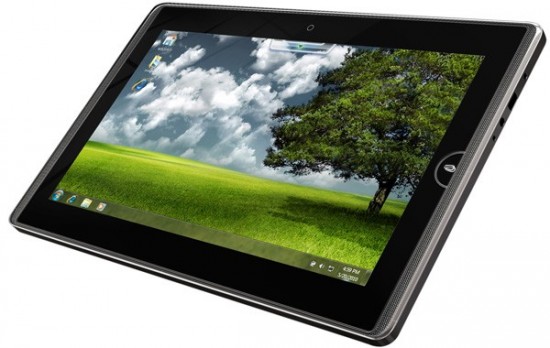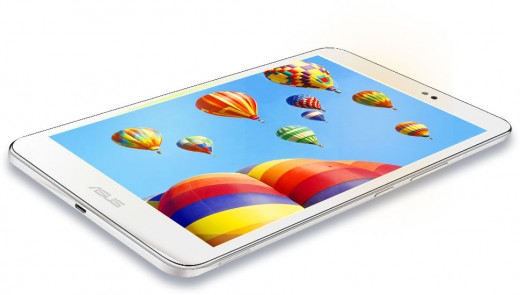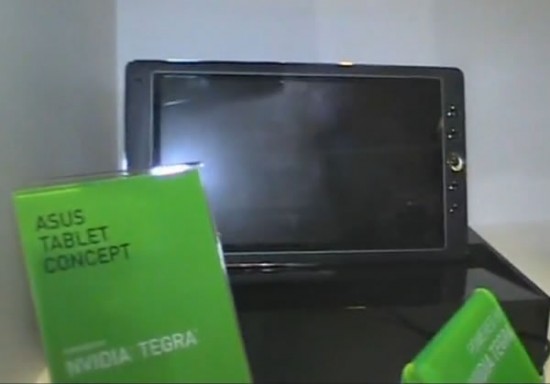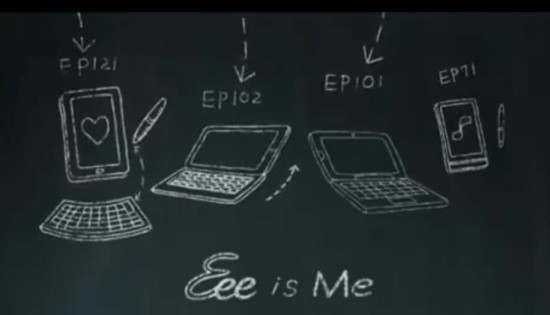 With Asus moving into a new brand name, ZenPad for their tablet line-up, we thought it would be neat to look back at the Asus tablet beginnings. As mentioned in our “about” page, first and foremost we are huge fans of Asus, and thus we’ve been watching their innovations from day one in the tablet space.
With Asus moving into a new brand name, ZenPad for their tablet line-up, we thought it would be neat to look back at the Asus tablet beginnings. As mentioned in our “about” page, first and foremost we are huge fans of Asus, and thus we’ve been watching their innovations from day one in the tablet space.
The first Asus tablet was spotted at CES 2010. At that time, Apple had launched the iPad with amazing success and the rest of the industry was trying to play catch-up. Although Asus is now using ZenPad, the first tablets from Asus were in face called Eee Pads. Prices initially were rumored to be around $500. The CES appearance was more of a teaser, as in people at the show saw some obscure product behind glass from Asus. It wasn’t shown off, but it was somewhat buried from the public eye.
The real hot discussion about Asus and tablets was before the Computex 2010 show in Taipai. In May, the Asus CEO was reported to say that indeed the Eee Pad would be showing up at Computex during their presentation on May 31, 2010. Rumors at the time had the first Eee Pad (ZenPad) at 10-inches, running Windows OS and powered by an Atom processor. There also was said to be a second Eee Pad (ZenPad) which was using Google Android OS and would be powered by a Nvidia Tegra processor. Release dates were rumored to be July 2010.
The May 31st, 2010 unveiling proved to be true and Asus showed off for the first time, their tablet line-up. The Eee Pad EP121 tablet was a 12-inch Windows tablet and the Eee Pad EP101TC was a 10-inch Windows tablet. Although at first blush people were astounded at the size of the EP121, it turned out to be a big seller. People love Windows and with a Window 7 tablet, it was very powerful and fully featured. It wasn’t cheap, but it sold very well.
It really wasn’t until CES 2011 when Asus really went “all in” with tablets. The leaks and rumors were hot and heavy prior to CES 2011 in January. It turned out to be “ZenPad” heaven for geeks. Asus took the wraps off a large number of tablets. These tablets included: EP71, EP101, EP103, and EP121. Asus was showing no fear and ultimately no limitation in terms of innovations. This was the official unveiling of the Asus Transformer which has basically revolutionized the tablet market ever since. The 2011 Eee Pad’s (ZenPad now) tablets included the Eee Slate, Eee Pad Transformer, Eee Pad Slider, and Eee Pad MeMO. Of all these initial tablets, the Eee Pad Slider proved the least popular and never saw any future releases. The Eee Slate, EP121, was popular, but it was expensive and was limited to that initial model only. The Asus Transformer TF101 was revolutionary and the Eee Pad MeMO was quite niche, but continued onto other releases, although the design and features really changed.
The rollout to consumers was slower than the initial unveils. The Slider eventually came to market and the Eee Pad MeMO was a limited market release. The Eee Slate EP121 tablet was widely available, as was the TF101 Transformer tablet. These all came out in 2011 and in late 2011, Asus was rumored to be releasing updates to their Transformer tablet already. Asus was aggressive, and that’s the interesting part about this story. There was always something new and innovative being rumored!
Asus knew that they had something special with the Transformer tablet, and quickly came out with an update in late 2011, named the Asus Transformer Prime TF201. This was a true ZenPad style model, as it was aluminum construction and had a real quality look and feel to it. It came in colors of Amethyst Gray and Champagne Gold. Reviewers loved it and it collected a number of awards for excellence. Thinner, lighter, and a nicer looking connector mechanism were all big improvements to the second generation Transformer tablet.
Asus made a big splash at CES 2012 with the MeMO 370T. This was a 7-inch Android tablet with a Tegra 3 processor. The price tag was going to be $249, which at the time, was shocking. This was THE tablet from the CES 2012 show. A sure winner if you listened to all the media reports and hands-on impressions. The MeMO 370T didn’t quite make it to market as expected, but more on that later.
When we said that Asus had a tablet hero product in the Transformer, we weren’t joking. In early 2012, rumors started to swirl about yet another Transformer tablet. This time, it would be the TF300 aka the 300 Series. These tablets were plastic build materials and were released as a more budget friendly option than the Transformer Prime TF201. They came in three colors, white, blue and red. At this time, Asus was able to really slim down the design for the TF300 series all the while maintaining a very reasonable price point. Asus even released a 4G version which was something rarely done at the time.
In mid 2012, aside from the TF300 Transformer tablets, Asus was rumored to be working on an update to the TF201 Transformer Prime. The TF201 was built with aluminum, but a side effect of that material was in the weakening of wifi signals.
In mid 2012, the Transformer Infinity TF700 tablet was released. This was the TF201 for all intents and purposes, but Asus made the lid with a strip of plastic on the edge of the lid, which was done to improve the wifi connection issues. This worked and the Transformer Infinity went on to be the best selling and more highly sought Asus tablet to date. The Infinity was built with the ZenPad philosophy, although this was still part of the Eee Pad lineup at the time. Great construction, specs, and design.
 Certainly the Asus Transformer tablet was a great success. However, that amazing 7-inch Android tablet shown off at CES 2012? Google took notice and in June 2012, the Nexus 7 tablet was born. This was a never-before-seen price point and given the specs, it was a sure fire hit. Being part of the Google Nexus brand brought more eyeball to Asus in the North American market. That was a key aspect of the partnership in that Asus would garner a stronger brand awareness from being associated with Google Nexus.
Certainly the Asus Transformer tablet was a great success. However, that amazing 7-inch Android tablet shown off at CES 2012? Google took notice and in June 2012, the Nexus 7 tablet was born. This was a never-before-seen price point and given the specs, it was a sure fire hit. Being part of the Google Nexus brand brought more eyeball to Asus in the North American market. That was a key aspect of the partnership in that Asus would garner a stronger brand awareness from being associated with Google Nexus.
The Computex trade show in Taipai has always been a favorite of Asus. At Computex 2012, Asus unveiled a new crop of tablets, but this time it was their Windows line-up. This was the official new brand, Vivo Tab for the Windows based Asus tablets. The models included the Vivo Tab RT and Vivo Tab 810. The Vivo Tab RT featured Windows RT and that model saw only one release. The Vivo Tab 810 also saw only one release model.
In August 2012 at IFA 2012, Asus unveiled the Transformer Book. This was dubbed the world’s first Transformer ultrabook. The Transformer Book series of tablets were Windows based and were ZenPad like in their design and aesthetics. Also, Asus unveiled a slew of Windows 8 tablets and hybrid convertibles. The Vivo Tab and Vivo Tab RT were shown off once again, along with a TaiChi hybrid device (has a touch screen display on the outside of the lid).
During 2012, Asus also brought out the Vivo Tab Smart in the Fall of 2012.
![]() Moving into 2013, Asus tablets shifted into MeMO Pad branding. Asus released a 7-inch MeMO Pad and a 10-inch MeMO Pad. Asus started to utilize HD and FHD in the branding of the MeMO Pad tablets at this point. In addition, the fonepad became a reality, although it was released in select countries. Not just a fonepad, but how about a fonepad note? Yes, there was that tablet/phone combo also, but again in select limited markets.
Moving into 2013, Asus tablets shifted into MeMO Pad branding. Asus released a 7-inch MeMO Pad and a 10-inch MeMO Pad. Asus started to utilize HD and FHD in the branding of the MeMO Pad tablets at this point. In addition, the fonepad became a reality, although it was released in select countries. Not just a fonepad, but how about a fonepad note? Yes, there was that tablet/phone combo also, but again in select limited markets.
Asus also created a follow-up Nexus 7 tablet (2013 model) which offered better features and design. This would be the last Nexus 7 and Asus would later return with their own version, the updated MeMO Pad 7.
We’ve seen Asus push the boundaries of the tablet design into areas where most companies wouldn’t dare. So in 2013 and 2014, Asus unveiled the Transformer Book Trio, which was a 3-in-1 tablet/laptop convertible. This means the Trio would run Android OS or Windows OS. You could switch between operating systems in the click of a button. Then in 2014 at Computex 2014, Asus showed off the Transformer Book V which is a 5-in-1 tablet/laptop/phone device. It’s like a padfone, with the phone docking into the back of the display. Remarkable innovation and no fear. That’s the Asus way!
In 2015, at CES, Asus took the wraps off a newly designed T100 Transformer Book, which is essentially the Windows version of the Transformer Pad. This new design is called the Transformer Book Chi Series and is even more impressive in terms of design and quality. There are 2 sizes available with the Transformer T100 Chi.
The sheer quantity of tablet releases by Asus is truly incredible. We haven’t even gotten into the padfone which truly shows off just how innovate Asus is, and their lack of fear when it comes to pushing the boundaries of products. We are sure with the ZenPad announcement, there will be plenty of new Asus tablets. As mentioned officially, there will be fewer tablets, but the quality will be high. At this point we don’t know what the road ahead entails, but we are sure it’s going to be fun covering the future releases!

















Wow what a blast from the past. Amazing that it was 2010 since all this started.
Thanks for visiting!!
Nice write up, good read. Looking forward to new stuff from asus.